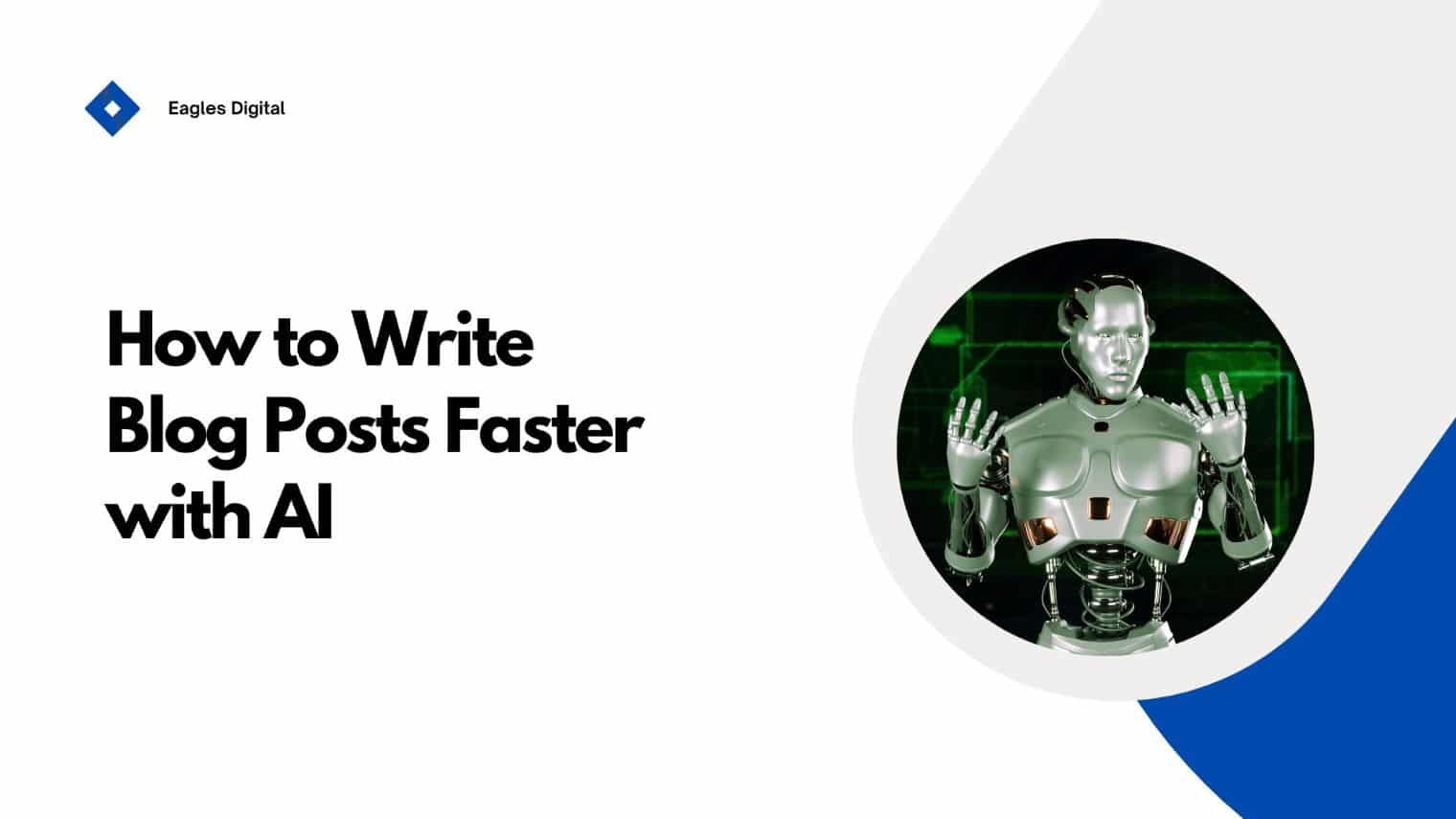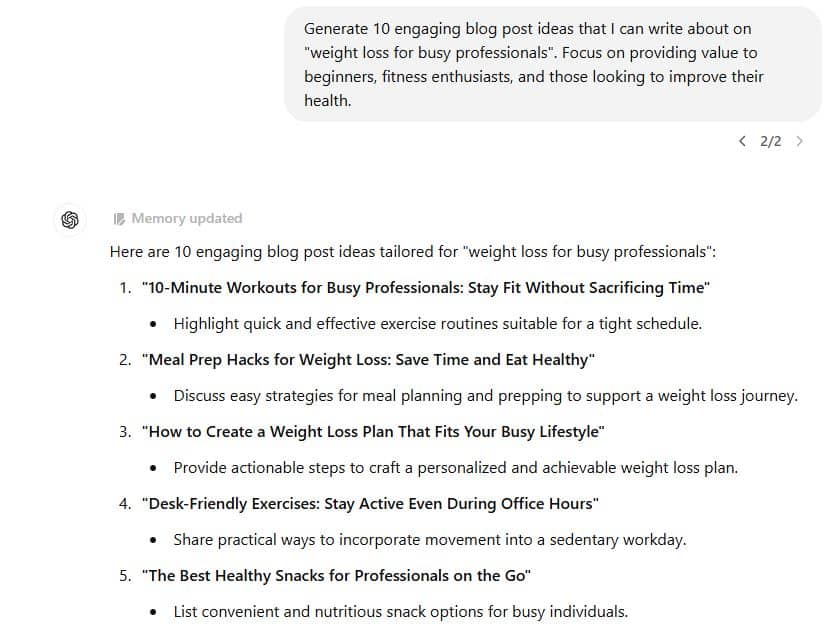How to Use AI to Write Blog Posts: A Step-by-Step Guide

Blogging is by far the most reliable way to share your knowledge, attract readers, and establish authority in your niches.
However, creating great content can take a lot of time and effort. This is where AI writing tools come in—offering efficiency and enhanced creativity.
Based on my experience, I believe AI writing tools are the best choice for content creators looking to create better content faster and with less effort.
In this article, I will walk you through how to use AI writing tools to create better blog posts faster, without sacrificing creativity or authenticity.
Why You Should Use AI for Your Blog Posts
AI writing tools are becoming essential for bloggers.
The best part about using AI for blog post creation is its simplicity and versatility.
AI tools streamline content creation, making it easier to craft engaging posts on a variety of topics. That’s why AI-powered writing tools have become so popular in the blogging industry.
The best things happen when you use AI as a collaborative tool. Don’t let any AI tool write your entire post.
Instead, I recommend you use AI writing tools to generate outlines, brainstorm ideas, and expand your thoughts.
AI tools like Jasper, Surfer SEO and Grammarly simplify and speed up your blogging process. They help you improve readability, and optimize your content for search engines.
AI can understand the context of your writing and suggest relevant keywords. This helps make your blog post optimized for search engines while keeping it smooth and readable.
However, it’s crucial to edit and add your personal touch. AI isn’t perfect, but when you use it the right way, it becomes an incredible tool for creating content faster and better.
How to Use AI to Write Your Blog Posts
Knowing how to use AI tools effectively is crucial to streamline your blogging process, save time, and create engaging content. Here’s how to use AI to write your blog post in 5 easy steps:
Step 1: Brainstorm Your Blog Topic with AI
Generating compelling blog topics can be challenging, but luckily, AI tools can help you brainstorm amazing blog post ideas.
You can use AI platforms like Writesonic, Jasper AI, or Copy.ai to explore potential content ideas. The goal here is to provide specific, detailed prompts that align with your niche and target audience.
You can start by inputting broad topic areas or challenges your audience faces.
For example, if you’re a fitness blogger, you might ask AI to generate topic ideas around “weight loss for busy professionals” or “home workout routines.” AI can quickly produce a list of potential blog post topics, revealing angles you might not have considered.

The good thing is that you don’t need to accept the first suggestions.
You can engage in a conversational approach with the AI writing tool. Ask follow-up questions, request variations, and focus on more specific subtopics.
If a suggested topic seems too generic, you can ask the AI to make it more unique or targeted to a specific audience segment.
Step 2: Generate a Detailed Outline
Once you’ve selected a topic, use AI to help you create a comprehensive outline. This is where these AI tools are so good in the content creation process.
You just need to provide the AI with your chosen topic and request a detailed structure that includes:
- Main sections and subsections
- Key points to cover
- Potential research areas
- Suggested headline variations
The goal is to create a basic outline that you’ll later expand with your unique insights and expertise. AI can help ensure your outline is comprehensive and logically structured, covering all critical aspects of the topic.
It’s also important to add your personal experiences, remove irrelevant sections, and ensure the structure aligns with your writing style and audience needs.
Step 3: Write Your First Draft
Writing the initial draft is where many content creators find the most value in AI tools. These tools are really great at getting your ideas on paper quickly.
That being said, Use AI only as a collaborative partner, not a complete replacement for your writing.
You can start by requesting a draft that follows your outline, providing specific instructions about tone, style, and target audience.
Be as detailed as possible in your prompt.
Instead of saying “Write a blog post about fitness,” try something like: “Write a conversational, motivational blog post about fitness for beginners, focusing on overcoming initial barriers and building sustainable habits.”
Based on my experience, AI writing tools work best with step-by-step guidance. Break your draft creation into sections, generating and reviewing each part separately. This approach allows for more control and ensures higher-quality content.
Step 4: Edit and Refine Your Blog
Editing is where your creativity and expertise become crucial. AI-generated content often requires significant refinement to sound authentic and provide great value to your blog.
Here are what you should do to improve:
- Remove generic or repetitive language
- Add specific examples from your personal experience
- Ensure the content matches your brand voice
- Check factual accuracy
- Improve your content readability.
Use additional AI editing tools like Grammarly or ProWritingAid to help with technical writing improvements. These tools can help identify complex sentences, suggest clarity improvements, and catch grammatical errors.
Step 5: Add Your Personal Touch
The final step is the most crucial in the entire process. AI can generate high-quality content, but it cannot replicate your personal experiences, professional insights, or authentic voice.
Add the following to make your content stand out:
- Personal anecdotes
- Professional insights
- Unique case studies
- Your specific perspective on the topic
This is how you can transform AI-assisted content from generic to authentic. Your personal touch will truly connect with your audience and set your content apart.
Google’s AI Content Guidelines: What You Need to Know
Google’s AI Content Guidelines focus on creating useful, accurate, and reader-friendly content. Whether a blog post is written by a human or an AI, it should solve a problem or answer a question for the reader.
AI can produce informative content, but Google encourages human review to ensure accuracy, context, and engagement.
The human contribution is crucial for adding depth, creativity, and personal insights, which AI alone cannot replicate. For AI-generated content to meet Google’s standards, it should be fact-checked, well-edited, and enriched with expertise from a human perspective.
Google explicitly states that any content fully generated by AI should be labelled transparently to maintain trust with readers. This approach ensures that users know whether a piece was created by AI and aligns with ethical practices.
Additionally, creating AI-driven content solely to manipulate search rankings violates Google’s spam policies.
Content written for search engines, rather than for readers, risks penalties, regardless of how it is created. Google’s primary goal is to highlight content that solves user problems and answers their questions effectively.
In summary, while AI tools can assist in content creation, their role should be supportive.
Human involvement ensures the final product is not only informative but also authentic and engaging, meeting both user needs and Google’s guidelines.
Common Mistakes to Avoid When Using AI for Blogging
Here are the most common mistakes AI users make while creating their blog posts.
Over-Automation:
One of the most common mistakes is to use AI like a content vending machine. Doing that will take away the personal touch that makes your writing special.
You can use AI as a brainstorming partner and to speed up your first draft. After that, spend time reviewing, personalizing, and adding your own voice and experiences to make the content authentic. This combination helps you save time while still creating content that connects with your audience.
Lack of Personalization:
Use AI to create an initial framework, then personalize each section with your own stories, real-world examples, and unique insights. This approach helps you connect with your readers on a human level, something that AI alone can’t do.
Your audience wants to engage with real experiences, not just machine-generated content.
Keyword Stuffing:
Search engine optimization is crucial for blog post creation. However, stuffing keywords into your content won’t work.
The key is to use semantic keywords naturally in your writing. Modern search algorithms are smart enough to understand context, so focus on providing great value.
A well-researched, conversational post will always perform better than one stuffed with irrelevant keywords.
FAQs About Using AI to Write Blog Posts
What are the best AI tools for bloggers?
To get started with AI-assisted blog writing, here are the tools you should consider:
1. Jasper
If you want to streamline your blog post creation, Jasper is a must-have tool. It uses advanced AI to generate engaging blog drafts, outline ideas and help you optimize your writing for SEO.
You can start by choosing a template like “Blog Post Intro” or “Blog Outline,” and Jasper will provide detailed suggestions optimized to your needs. It’s also a great tool for brainstorming, structuring your post, and creating content that matches your target audience.
Jasper is an excellent tool for bloggers looking to save time and increase productivity.
2. Writesonic
Writesonic is an AI-powered tool that makes it easy to create compelling blog posts and marketing copy in minutes.
The platform comes with tons of templates that can help you manage your content creation workflow.
One of the things I like about Writesonic is its capability to write persuasive content. It helps you create content that not only informs but also converts readers into customers.
With features that cater to writers at all levels, Writesonic is ideal for bloggers looking to produce high-quality content quickly and efficiently.
3. ChatGPT
ChatGPT is an excellent interactive AI assistant for crafting blog posts. It’s my favourite AI tool for brainstorming ideas, structuring content, and writing in a natural style.
ChatGPT can adapt its tone to suit your audience, making it ideal for crafting personalized and conversational blog posts. Its interactive nature makes it a go-to tool for bloggers who value flexibility and creativity in their content creation process.
How much editing does AI content require?
AI content needs a complete human review – typically about 50-70% editing to transform it from a robotic draft to engaging, helpful content for your readers.
When you know how to use AI tools and prompt them correctly, you’ll notice a significant reduction in your editing time.
Check out our guide on How to Use AI Writing Tools to Write Faster and Better.


